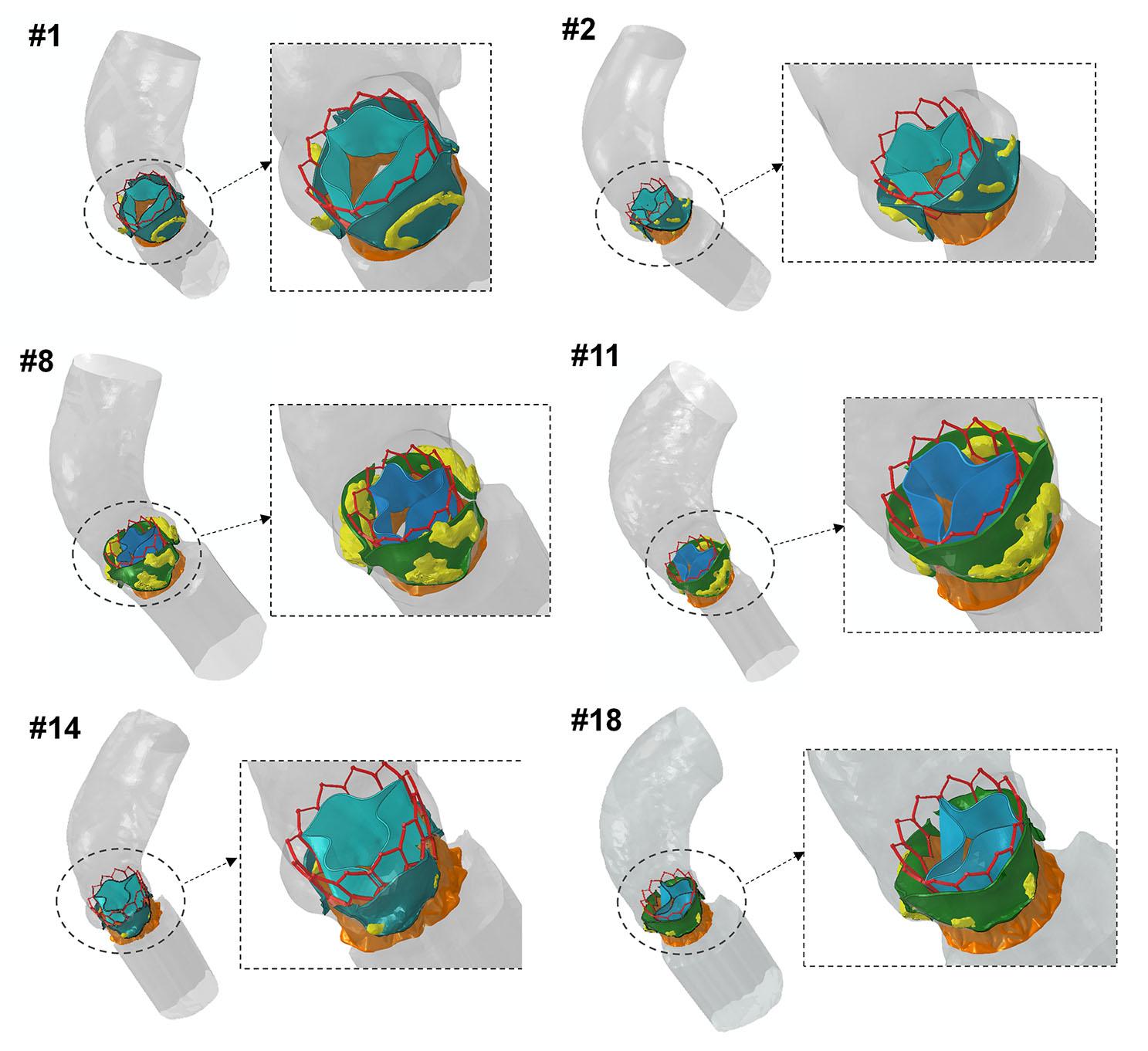Milestone #10 successfully accomplished with the patient-specific modeling of TAVI using the SAPIEN 3 Ultra device
A major milestone has been achieved by the SimInSitu project, showcasing the developmental phase of an in-silico platform designed for evaluating the structural and hemodynamic performance of Transcatheter Aortic Valve Implantation (TAVI) in patient-specific anatomies. The SAPIEN 3 (S3) device was initially developed and validated by the 4RS project partner and subsequently utilized by the UniPA team to virtually treat patients with aortic valve stenosis.
The development of patient-specific models involved the segmentation of the aortic root from angio-CT imaging, as well as the creation of a novel approach to determine the unknown material properties of TAVI patients. This population is characterized by advanced age, which alters the biomechanical response of the vessel wall and has been poorly investigated by ex-vivo mechanical testing as patients do not undergo surgery. The approach relies on inverse analysis to estimate the material properties of the aortic wall and calcified valve leaflets using measurements collected from medical images.
Furthermore, the in-silico simulation of TAVI takes advantage of clinical data to set patient-specific boundary conditions, tailoring each simulation to the actual TAVI procedure. These patient-specific TAVI simulations realistically replicate the balloon inflation procedure to deliver the S3 model. Following the TAVI simulation, a fluid-dynamic simulation is performed to estimate the S3-related device performance, including the pressure gradient across the bioprosthesis and the effective orifice area. Both the structural and fluid-dynamic simulations were developed according to ASME VV40 and 10 to enhance the credibility of the in-silico computational platform for TAVI.
Preliminary comparisons of device output parameters with clinical data suggest a good agreement between predicted and actual post-TAVI imaging and functional data

